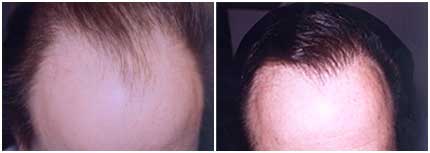Corrective Hair Transplant
Written by Dr. Griffin
Hair restoration is a very effective way of correcting pattern hair loss in men and women. Over the past decade, techniques for performing hair restoration have advanced, making the surgery more reliable and capable of producing very natural, lasting results. There are, however, still plenty of opportunities for hair transplants to go wrong and produce undesirable results. When a patient is not happy with the results of a hair transplant, he or she may seek a corrective hair transplant to provide a more natural look.
Common mistakes associated with hair transplants
With hair restoration becoming more and more popular, many surgeons and medical practices seek ways to capitalize on this revenue stream – even ones who may not have the experience or skills required to successfully perform hair transplants. In other cases, hair restoration clinics may perform hair transplants using a rotating staff of surgeons and support teams, rather than using one surgical team to perform the surgery from start to finish. Common mistakes include unskilled removal of hair follicles from the donor site, which can result in scarring or uneven patches, and unnatural or unsuitable placement of the hair grafts. In some cases, grafts are placed so poorly that new hair growth does not occur.
Real Patient Before & After Photos
When it comes to hair restoration surgery, the best results are achieved when a highly skilled and experienced hair restoration surgeon performs the surgery from start to finish. This helps prevent errors when the hair grafts are harvested from the donor site and when they are transplanted to their new location. Another key to success is the surgeon’s artistic skill – a natural and aesthetically pleasing outcome depends upon the surgeon’s ability to reproduce the patient’s natural hairline.
Corrective hair transplant techniques
Thanks to many years of experience performing hair transplants, Dr. Griffin is able to easily identify what has gone wrong during a primary hair transplant. He then creates a plan to correct these mistakes so he can craft a more natural outcome for the patient. Once the errors have been identified and a plan created, the corrective hair transplant is performed similarly to any other hair transplant performed by Dr. Griffin.
Real Patient Before & After Photos
- The first step involves harvesting hair grafts from the donor site. Dr. Griffin will take special care to preserve the integrity of the scalp in the donor area and, if necessary, will work to address any scarring that occurred during the primary hair transplant. Harvesting may be done using Follicular Unit Excision, or Dr. Griffin may utilize the more traditional strip harvesting technique. The approach used will depend upon the patient’s unique needs and the condition of the donor site.
- Next the hair grafts are carefully prepared for transplantation.
- Finally the hair grafts are individually placed in the recipient site, with special attention given to the angle of placement, density, pattern and hairline shape.
Dr. Griffin and his medical team manage the entire process from start to finish, helping to ensure a more consistent, natural result.
Corrective hair transplant recovery and results
The recovery period following corrective hair transplant is similar to that of a primary hair transplant. While some patients may able to return to work the next day, many patients prefer to take a few days off from work, as some scabbing will occur and last for about one week. Bandages usually are not required. It is important to follow the post-operative instructions given by the staff. More strenuous activities and exercise should be avoided for seven days to prevent injury to the donor and recipient sites. Dr. Griffin encourages his patients to protect their scalps from the sun to prevent discoloration. A hat can be worn immediately and is a great way to ensure complete protection from the sun. After the donor and recipient areas have healed, sunscreen can be applied to the scalp.
When performed by a surgeon who specializes in corrective hair transplants, the results of the surgery will be natural, aesthetically pleasing, and a dramatic improvement from the primary hair transplant. Hair begins to grow around 3 months postoperatively. The full results of a hair transplant are usually seen within 12 to 18 months. More than one procedure may be required, the need for which will be accessed after the hair grows in.



